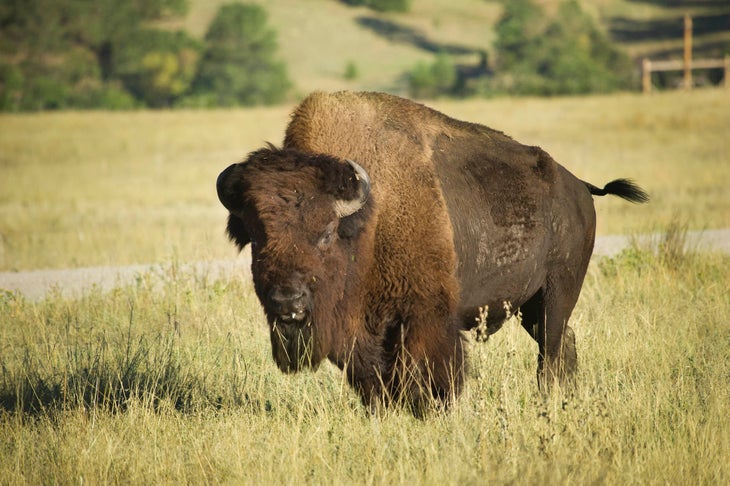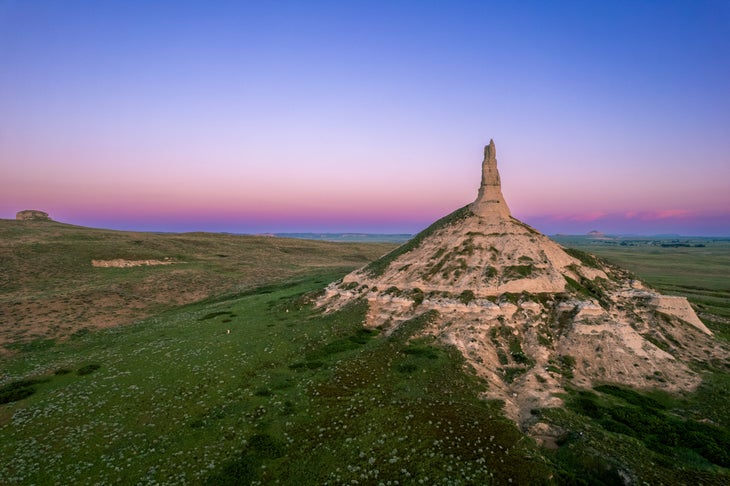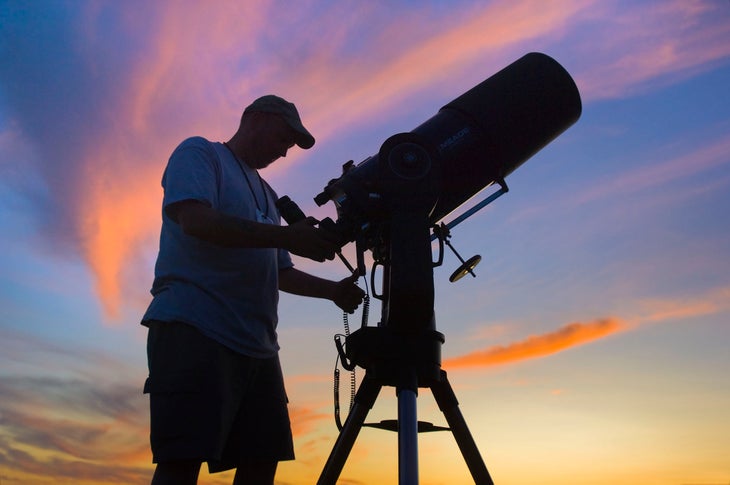Yes, that Nebraska. Listen, we’re not here to convince you that purple mountain majesty is out. We’re just saying that the fruited plain has more than meets the eye. Especially if you just rolled that eye. Before you go making too many assumptions, discover all the natural wonders this flat-out amazing midwest state has to offer.
Sandhill Crane Migration
Maybe you’ve never considered Nebraska as a travel destination before, but to sandhill cranes, it’s the place to be. From March to mid-April, roughly 1 million sandhill cranes stop to rest and refuel in the Platte River Valley on their way north to Canada and Alaska. That’s 80 percent of the world’s sandhill cranes, all in one region, all at one time. Fort Kearny State Recreation Area might be the best spot to see this incredible display—the walking bridges that crisscross over the Platte River put you right in the thick of things.
Extend your adventure: Experience migration on bike with the Sandhill Crane Ride in Grand Island in late March.
Fort Niobrara National Wildlife Refuge
Sometimes the natural wonders of the world need our help to stay that way. Fort Niobrara National Wildlife Refuge, described by the National Parks Service as a “crossroads of biodiversity,” was established in 1912 by Teddy Roosevelt to protect native bird populations. The result of this effort speaks for itself. Today, Fort Niobrara is home to more than 230 species of birds, some of which exist only in the region. Elk and deer are also abundant—among 75 other animal species—and you can even spy a herd of 350 bison, which were introduced in 1913.

Extend your adventure: Valentine National Wildlife Refuge, only an hour south, is home to 270 bird species and dozens more species of mammals and reptiles.
Chimney Rock National Historic Site
As you marvel at how Chimney Rock rises dramatically out of the surrounding plains, know that you’re in good company. Throughout the ages, Chimney Rock has stood as an important marker amid the unending grassland, first for Native Americans and later for Western emigrants and fur traders. For those traveling to Oregon, California, and Utah, this lonely sentinel was their first taste of the landscape of the American West. Chimney Rock was so striking, in fact, that it was mentioned in more historic emigrant diaries than any other landmark along the Oregon Trail.

Extend your adventure: Make sure to check out the Ethel & Christopher J. Abbott Visitor Center to learn more about the lives of Western emigrants and try your hand at packing a covered wagon.
Merritt Reservoir State Recreation Area
Merritt Reservoir is located in a scenic river valley and boasts some of the state’s best muskie fishing, but those aren’t the only qualities that make it a natural wonder. To experience the best of what Merritt has to offer, you’ll have to wait until after dark. In 2022, the area was designated an International Dark Sky Place by DarkSky International, an organization dedicated to preserving starry-sky parks and communities, and offers the best stargazing in the state. Visit on a clear, moonless night in summer to see the Milky Way at its most visible.

Extend your adventure: Visit during the Nebraska Star Party (July 20-25, 2025), a weeklong event with speakers, classes, and nightly observations.
Sandhills Region
If you’re on a Nebraska adventure tour, you’ll wind up in the Sandhills no matter what. But while you’re exploring this massive region (roughly 20,000 square miles) in north-central Nebraska, take some time to appreciate the uniqueness of the seemingly untouched prairie around you. You’ll be looking at both the largest sand dune formation in the Western Hemisphere and the most intact swath of temperate grassland in the world. Stabilized thousands of years ago by prairie grass, the Sandhills might not look like the sandhills you’ve imagined. But a lot of things in Nebraska aren’t quite what you expected.

Extend your adventure: Travel the 272-mile Sandhills National Scenic Byway (Highway 2) from Grand Island to Alliance. Make sure you see Alliance’s top attraction: Carhenge.
The mission of Visit Nebraska is to expand Nebraska’s dynamic and diverse travel industry making it more viable by creating awareness, attracting increased visitors which results in greater tourism revenue and economic gain throughout the state. To learn more, go to VisitNebraska.com.
